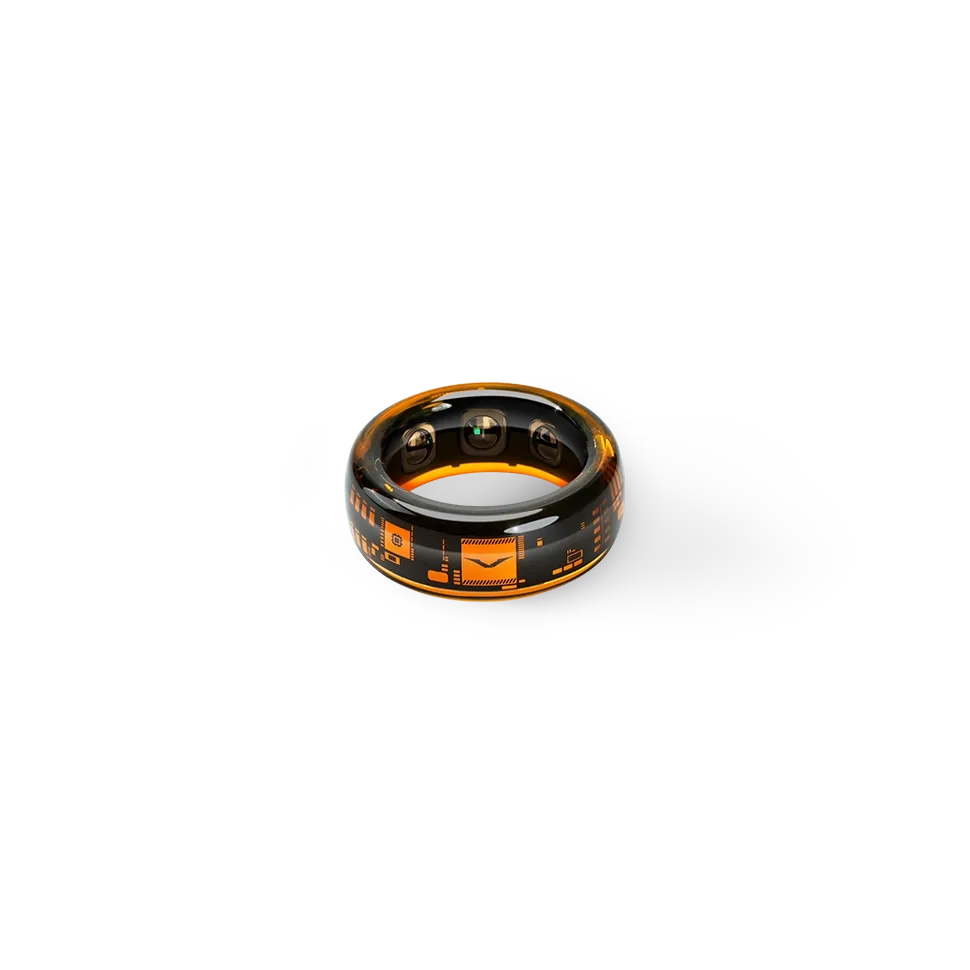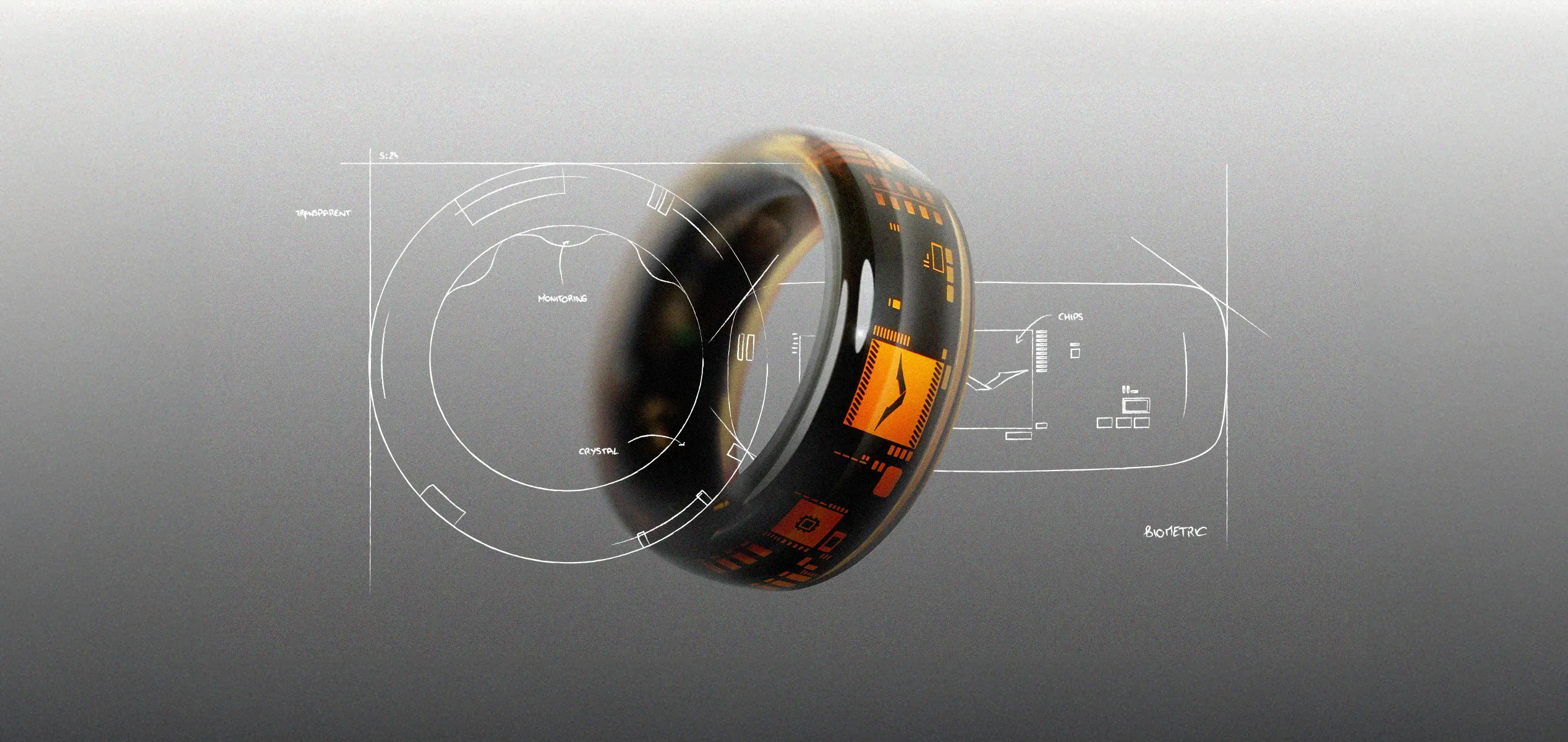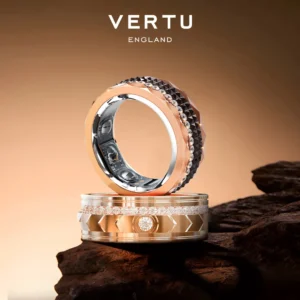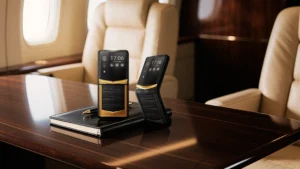
How are smart rings powered? Most smart rings use compact, battery-powered systems with rechargeable batteries to fit their small size. A smart ring works like a tiny wearable device that tracks health or activity. Today’s smart rings rely on advanced battery solutions. For example, silicon-carbon anodes boost energy density by up to 30%, and curved lithium polymer batteries help some smart rings last 7–12 days on a single charge. Smart ring makers now achieve high battery life without making devices bigger, showing how are smart rings powered has improved over time.
Key Takeaways
-
Smart rings use small, rechargeable lithium-ion or lithium-polymer batteries that fit their curved design and last several days on a single charge.
-
Efficient power management and Bluetooth Low Energy technology help smart rings conserve battery while tracking health data like heart rate and sleep.
-
Magnetic and wireless charging methods keep smart rings easy to charge and maintain, supporting waterproof and seamless designs.
-
Battery life varies by model and features, with most smart rings lasting 4 to 7 days, while advanced health monitoring may reduce battery time.
-
The Aura Ring stands out with its elegant crystal design, advanced sensors, and up to 10 days of battery life, offering a stylish and reliable smart ring experience.
How Are Smart Rings Powered
Smart Ring Battery
Smart rings rely on advanced battery technology to deliver reliable performance in a tiny form factor. The smart ring battery must fit inside a band that is only a few millimeters wide. Manufacturers use high energy density lithium-ion or lithium-polymer batteries. These batteries provide enough power for several days of use while keeping the ring lightweight and comfortable.
The following table shows the typical specifications found in a smart ring battery:
|
Parameter |
Specification/Range |
|---|---|
|
Battery Type |
Lithium-ion / Lithium-polymer |
|
Voltage |
3.7V to 4.4V |
|
Capacity |
|
|
Thickness |
|
|
Width |
4mm to 10mm |
|
Length |
21.8mm to 31.89mm |
|
Energy Density |
Up to 470 Wh/L |
|
Standby Time |
Up to 10 days |
Smart ring battery design uses curved or arc-shaped cells. This shape allows the battery to fit the natural curve of the ring. The stacking process in battery production improves sealing and durability. It also helps prevent damage and extends the service life of the smart ring battery. Safety remains a top priority. Manufacturers test each battery to avoid overheating and short circuits, since the device sits close to the skin.
Tip: To extend the life of a smart ring battery, avoid exposing it to extreme temperatures and use partial charge cycles when possible.
How Do They Work
How are smart rings powered? The answer lies in the combination of efficient battery design and low-power electronics. Each smart ring contains a battery, a set of sensors, and a Bluetooth Low Energy (BLE) chip. The battery supplies power to the sensors and communication chip. BLE technology reduces battery drain by using less energy for data transfer.
How do they work in daily use? The smart ring battery powers the sensors that track health metrics like heart rate, sleep, and activity. The ring collects this data and sends it to a smartphone app using BLE. Power management features, such as sleep modes, help conserve battery when the ring is not in active use.
The table below compares battery life and charging methods for popular smart rings:
|
Model |
Battery Life |
Charging Method |
|---|---|---|
|
Oura Ring |
4-7 days |
Magnetic, Wireless |
|
Samsung Galaxy Ring |
5-7 days |
Magnetic |
|
Ringcon |
3-5 days |
Magnetic |
|
Circul |
12-16 hours |
Magnetic |
|
Ultrahuman Ring |
4-6 days |
Magnetic |
How are smart rings powered for long periods? The answer comes from combining a high-capacity smart ring battery with efficient electronics. This approach allows users to wear their smart rings for days without frequent charging. The smart ring battery, along with smart power management, ensures a balance between performance and convenience.
Battery Types
Lithium-Ion vs. Lithium-Polymer
Smart rings rely on two main types of battery: lithium-ion and lithium-polymer. Each battery type offers unique benefits for wearable technology. Lithium-ion batteries use a rigid metal shell and a liquid electrolyte. This design gives them high energy density, which means they store more energy in a small space. Many high-capacity devices, such as smartphones and laptops, use lithium-ion batteries for this reason.
Lithium-polymer batteries, often called Li-Po, use a gel-like or solid polymer electrolyte and a flexible aluminum pouch. This flexible design allows manufacturers to create curved lipo battery shapes that fit perfectly inside smart rings. The curved lipo battery adapts to the ring’s form, making it comfortable and lightweight. Although lithium-polymer batteries have lower energy density than lithium-ion, they charge faster and have a lower self-discharge rate. Their flexible packaging also improves safety and reduces the risk of leaks or punctures.
|
Aspect |
Lithium-Ion (Li-Ion) |
Lithium-Polymer (Li-Po) |
|---|---|---|
|
High Energy Density |
Yes |
No |
|
Curved Lipo Battery |
No |
Yes |
|
Efficiency |
Good |
Excellent |
|
Safety |
Good |
Excellent |
|
Flexibility |
Low |
High |
Smart rings often use lithium-polymer batteries because of their shape adaptability and safety. The curved lipo battery design supports energy-efficient design and fits the small, curved space inside a ring.
Power Management
Power management plays a key role in how smart rings are powered and how long the smart ring battery lasts. Manufacturers use intelligent systems to improve battery efficiency and extend battery life. These systems include low-power chipsets, adaptive sensor usage, and sleep modes. Some smart rings use AI to predict user behavior and adjust power use.
-
Optimized wireless charging uses electromagnetic coils for faster, more efficient charging.
-
Adaptive power scaling and software updates help the battery last longer.
-
Energy harvesting methods, such as thermoelectric generators and kinetic energy, are being explored for future smart rings.
The smart ring battery must support continuous health tracking, which many users want. High energy density and efficient power management allow smart rings to run for days on a single charge. The energy-efficient design of the curved lipo battery, combined with advanced power management, ensures that smart rings deliver reliable performance and long battery life.
Charging Methods
Smart rings use advanced charging methods to keep the battery full and ready for daily use. The two main charging mechanisms are magnetic charging and wireless charging. Each method offers unique benefits for users who want convenience and reliability.
Magnetic Charging
Magnetic charging is a popular choice for many smart rings. This method uses magnets to align the ring with the charger. The battery connects securely, and the charging process starts automatically. Many users find magnetic charging easy because the ring snaps into place without much effort.
The RingConn Charging Dock shows how magnetic charging works in practice. The dock uses a magnetic connection to hold the smart ring during charging. When the battery connects, users hear a “ding” sound. An illuminated logo on the dock shows the charging progress. The RingConn app also gives live updates on the battery status. These features make magnetic charging simple and user-friendly, even though there is no research data on its performance.
Magnetic charging helps protect the battery by reducing wear on connectors. This method also keeps the ring’s design smooth and comfortable.
Wireless Charging
Wireless charging is another common method for powering smart rings. This technology uses electromagnetic fields to transfer energy from the charger to the battery without direct contact. Wireless charging methods allow for portless and waterproof designs, which are important for wearable devices.
The table below compares wired and wireless charging for smart rings:
|
Category |
Wired Charging |
Wireless Charging |
|---|---|---|
|
Efficiency |
Lower (60–80%) |
|
|
Charging Speed |
Fast, high wattage |
Slower due to heat limitations |
|
Cost |
Inexpensive |
Higher component costs |
|
Battery Health |
Controlled and cool |
More thermal stress |
|
Safety |
Connector-dependent |
Portless, safer surfaces |
|
Portability |
Flexible |
Convenient but requires charging pad |
|
Design Integration |
Requires physical port |
Enables seamless and waterproof design |
Wireless charging offers several advantages for smart rings:
-
It enables seamless, waterproof designs.
-
It removes exposed connectors, which protects the battery from corrosion.
-
It supports a premium user experience and design flexibility.
Wireless charging methods may be less efficient and slower, but they help extend the life of the battery by reducing mechanical wear. Many users prefer wireless charging because it keeps the smart ring safe and easy to use.
Battery Life
Usage and Longevity
Smart rings have become popular for their ability to deliver long-lasting performance in a small package. Most smart rings use a battery designed for compactness and efficiency. The battery life of these devices often ranges from 4 to 7 days, which surpasses the daily charging needs of many smartwatches. For example, the Oura Ring has led the market with over a million units sold, showing that users value both battery life and health tracking features.
Different smart ring models offer varying battery life based on their features. Minimalist rings can last 5 to 7 days on a single charge. Feature-rich rings, which include advanced health sensors, usually provide 3 to 5 days of battery life. Medical-grade rings, such as the Circul Ring, may last only 12 to 16 hours when running high-frequency monitoring. The Circul Ring demonstrates how battery longevity can decrease when the device supports medical-grade blood oxygen monitoring at a high sampling rate. This trade-off between monitoring accuracy and battery life is common in the smart ring market.
Long-term user testing provides more insight into battery endurance. The Oura Ring, tested since 2018, has shown improvements in both durability and battery performance across generations. The RingConn Gen 2 Air stands out for lasting eight to nine days on a single charge, outperforming many competitors. These results come from real-world user experiences, which help document how smart rings perform over time.
Factors Affecting Life
Several factors influence how long a smart ring battery lasts. The type of battery used, such as lithium-ion or lithium-polymer, plays a major role. Power management features, including low-power sensors and Bluetooth Low Energy, help extend battery life. The frequency and type of health monitoring also impact battery performance. Rings that track data continuously will use more battery than those that monitor periodically.
User behavior affects battery life as well. Many users prioritize sleep tracking, which can change how often the battery needs charging. Environmental conditions, such as temperature, can also affect battery efficiency. Charging habits matter, too. Partial charging cycles and avoiding extreme temperatures help maintain sufficient battery life over the long term.
Tip: To get the most from a smart ring battery, users should follow best practices for charging and storage.
A table below summarizes the main factors:
|
Factor |
Impact on Battery Life |
|---|---|
|
Battery Type |
Determines capacity and shape |
|
Monitoring Frequency |
Higher frequency uses more power |
|
Power Management |
Efficient systems last longer |
|
User Behavior |
Usage patterns affect duration |
|
Environmental Factors |
Temperature impacts efficiency |
Smart rings continue to improve as manufacturers focus on delivering sufficient battery life without sacrificing performance or comfort.
Aura Ring Features

Design and Technology
The Aura Ring by VERTU stands out with its crystal composite design. Artisans craft each ring through a process that involves 20 precise steps. The crystal material captures and reflects light, creating a radiant effect. Deep-gold infusion techniques give the ring a unique glow. This design makes the Aura Ring both a piece of jewelry and a statement of innovation.
The ring fits the finger with ergonomic curves. Its featherlight structure feels like a second skin. Users can wear the ring all day without discomfort. The bionic fit allows the ring to move naturally with every gesture. This comfort does not compromise the technology inside.
Inside the Aura Ring, advanced sensors work with a nano-sensor chip. The chip integrates with the crystal material. It collects data from the body and supports real-time monitoring. The ring uses invisible technology to keep the design smooth and seamless. Users do not see any buttons or connectors. The Aura Ring combines beauty with advanced engineering.
Health Monitoring
The Aura Ring offers continuous health monitoring. It tracks vital signs such as heart rate data, blood oxygen, blood pressure, and glucose levels. The ring also provides fitness tracking and activity tracking. Users can track their sleep and receive detailed wellness reports. The AI health monitoring system analyzes the data and gives clear insights.
Clinical studies support the accuracy of AI health monitoring in smart rings. For example, researchers at Brigham and Women’s Hospital found that the Oura Ring provided the most accurate consumer sleep tracker results in four-stage sleep classification. Another study published in JMIR showed that the Oura Ring’s nocturnal heart rate and heart rate variability data matched well with medical-grade ECG readings. These findings confirm the reliability of AI-driven health monitoring features in smart rings.
The Aura Ring uses a nano-sensor chip to deliver over 85% predictive accuracy. The ring’s health concierge service tracks patterns and identifies early signals. Users receive proactive suggestions to improve their wellness. The system supports both fitness tracking and continuous health monitoring. The ring’s night mode and cinematic mode help users understand their body’s rhythms. The Aura Ring turns complex health data into simple, actionable insights.
Battery and Charging
The Aura Ring leads the market with up to 10 days of battery life. This long-lasting battery supports continuous health monitoring and fitness tracking without frequent recharging. The ring uses a high-density battery that fits inside its slim design. The battery powers the sensors and AI system, ensuring reliable performance.
The Aura Ring is water-resistant up to 5 ATM. Users can wear it during daily activity, workouts, or even swimming. The battery remains protected and efficient in various conditions.
Charging the Aura Ring is simple and convenient. The ring uses advanced charging technology that keeps the design seamless. Users do not need to worry about exposed connectors or complicated charging docks.
|
Smart Ring |
Battery Life |
Charging Method |
Notes on Battery & Charging Performance |
|---|---|---|---|
|
Aura Ring by VERTU |
Up to 10 days |
Seamless, advanced |
Longest battery life; water-resistant; invisible charging; supports all-day use |
|
Oura Ring |
Reliable |
Charging dock |
Accurate health tracking; polished app; dock less preferred |
|
RingConn |
6 to 9 days |
Charging case |
Best battery life among tested rings; charging case preferred |
|
Samsung Galaxy Ring |
Good (best paired) |
Charging case |
Slim; best battery life with Samsung devices; praised charging case |
|
Ultrahuman Ring Air |
3 to 4 days |
Not specified |
Decent battery life; fitness-focused |
|
Circular Slim |
2 to 3 days |
USB stick charger |
Poor battery life; charger easy to misplace |
The Aura Ring’s battery technology and charging experience set it apart. Users enjoy longer battery life, easy charging, and reliable performance. The ring supports activity and fitness tracking, real-time monitoring, and advanced health monitoring without interruptions.
Note: The Aura Ring by VERTU combines elegant design, advanced sensors, and powerful battery technology. It delivers a seamless user experience for those who want both style and substance in a smart ring.
Smart rings use advanced batteries and efficient charging methods to deliver reliable performance in a small package. Most users find these devices comfortable and easy to use, with technical data showing good alignment with standard sleep measurements. The Aura Ring by VERTU stands out for its crystal design, advanced sensors, and up to 10 days of battery life. When choosing a smart ring, people should consider comfort, technology, and battery performance.
FAQ
How are smart rings powered?
Smart rings use rechargeable batteries with high energy density. These batteries fit inside the ring’s small body. The battery-powered system supports sensors and Bluetooth chips. This design allows smart rings to work for several days without frequent charging.
How do smart rings track your sleep and activity?
Smart rings use advanced sensors to monitor sleep, heart rate data, and activity tracking. The sensors collect real-time data. The ring sends this information to a smartphone app. Users can see their sleep patterns and daily activity levels.
What charging methods do smart rings use?
Most smart rings use magnetic charging or wireless charging methods. Magnetic charging uses magnets to connect the ring to a charger. Wireless charging uses electromagnetic fields. Both charging mechanisms keep the ring’s design smooth and water-resistant.
How long does a smart ring battery last?
Battery life depends on the model and features. Many smart rings offer sufficient battery life for 4 to 10 days. Rings with continuous health monitoring or real-time monitoring may need charging more often. Efficient power management helps extend battery life.
What makes the Aura Ring’s battery technology unique?
The Aura Ring uses a curved lipo battery with high energy density. This energy-efficient design fits the ring’s shape. The battery supports continuous health monitoring, fitness tracking, and activity tracking. Users enjoy long battery life and reliable performance.






